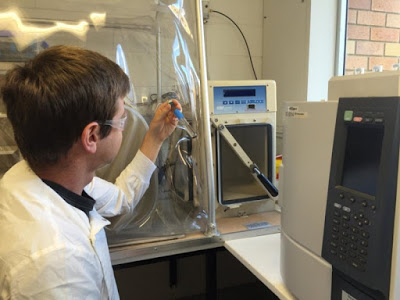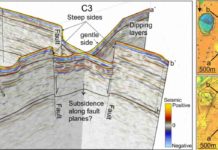
Textbooks on methane-metabolising organisms might have to be rewritten after researchers in a University of Queensland-led international project today announced discovery of two new organisms.
Deputy Head of UQ’s Australian Centre for Ecogenomics in the School of Chemistry and Molecular Biosciences Associate Professor Gene Tyson said these new organisms played an unknown role in greenhouse gas emissions and consumption.
“We sampled the microorganisms in the water from a deep coal seam aquifer 600m below the earth’s surface in the Surat Basin, near Roma, Queensland, and reconstructed genomes of organisms able to perform methane metabolism,” Associate Professor Tyson said.
“Traditionally, these type of methane-metabolising organisms occur within a single cluster cluster group of microorganisms called Euryarchaeota.”
“This makes us wonder how many other types of methane-metabolising microorganisms are out there?”
However, Dr Tyson’s group discovered novel methane metabolising organisms belonging to a group of microorganisms, called the Bathyarchaeota which are an evolutionarily diverse group of microorganisms found in a wide range of environments, including deep-ocean and freshwater sediments.
” To use an analogy, the finding is like knowing about black and brown bears, and then coming across a giant panda,” Dr Tyson said.
“They have some basic characteristics in common, but in other ways these they are fundamentally different.”
Dr Tyson said: “This makes us wonder: how many other types of new ‘bears’ or of methane-metabolising microorganisms are out there, that science has still not identified?
“The significance of the research is that it expands our knowledge of diversity of life on Earth and suggests we are missing other organisms involved in carbon cycling and methane production.”
The discovery of the novel methane-metabolising microorganisms was made using techniques that sequence DNA on a large scale and assemble these sequences into genomes using advanced computational tools, many of which were developed at The Australian Centre for Ecogenomics over the past 24 months.
Video
Reference:
Paul N. Evans, Donovan H. Parks, Grayson L. Chadwick, Steven J. Robbins, Victoria J. Orphan, Suzanne D. Golding, Gene W. Tyson. Methane metabolism in the archaeal phylum Bathyarchaeota revealed by genome-centric metagenomics. Science, 2015 DOI: 10.1126/science.aac7745
Note: The above post is reprinted from materials provided by University of Queensland.










